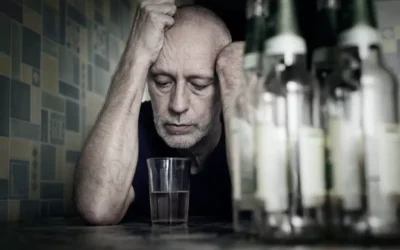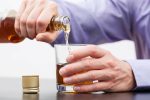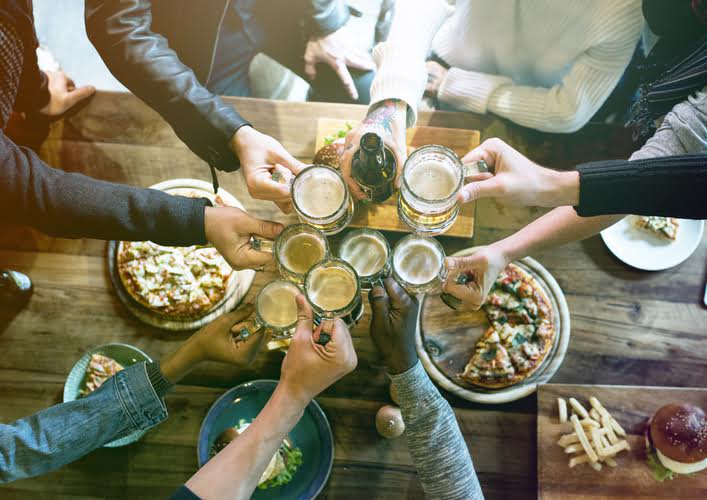Alcohol may interact with prescription medications in several ways. You might want to know what risks are involved with drinking alcohol while taking prescription drugs. It’s easy to see that different levels of drug interactions can occur when you mix certain antibiotics with alcohol, so be sure to review the drug interactions for each drug you are prescribed. Below is a small sampling of some important (major) antibiotic and alcohol drug interactions, but many more exist that may have a moderate or minor significance.
What Type of Antibiotics Interact With Alcohol?
Alcohol may also increase some of the central nervous system (CNS) side effects such as weakness, dizziness, or drowsiness. Alcohol may also increase some of the central nervous choosing an alcohol rehab treatment program system (CNS) side effects such as dizziness, drowsiness, and difficulty concentrating. Also possible with absorption of vaginal cream into the bloodstream (systemic).
- Responsible drinking will most likely not impede the effectiveness of azithromycin but may exacerbate side effects like nausea, vomiting, headaches, and diarrhea.
- In many cases, you only need to take antibiotics for a week or two to fully recover from an infection.
- They might also have an alcohol use disorder, and have a hard time abstaining from alcohol.
- The recommendations are open to interpretation (often based on personal experience, observation and general knowledge of how alcohol and antibiotics act in the body).
- The effects of alcohol on levofloxacin, moxifloxacin, and trovafloxacin were studied in a rat pneumonia model (24).
- Disulfiram-like reaction which may include abdominal cramps, nausea, vomiting, headaches, flushing, or rarely more serious reactions.
Metronidazole (Flagyl) or tinidazole (Tindamax)
Doctors use oxazolidinones to treat abdominal, skin, lung, and urinary tract infections. This section considers the recommendations and possible side effects of consuming alcohol with different antibiotics. Disulfiram-like reaction which may include abdominal cramps, nausea, vomiting, headaches, flushing, sweating, fast heart rate or more severe reactions. Excessive alcohol use is well-known to cause liver damage like cirrhosis. Taking antibiotics that can also damage the liver may worsen these types of problems.
Alcohol And Antibiotics
When antibiotics upset the bacterial balance, a person may experience side effects, such as nausea or diarrhea. Consuming probiotics and prebiotics during and after a course of antibiotics can help to restore the balance of bacteria in the gut. The combination will cause effects like disorientation, nervousness, disturbances in attention, memory loss, and confusion. Responsible drinking should not impede the effectiveness of cephalexin but may exacerbate side effects like dizziness, drowsiness, and nausea. It’s also important to note that alcohol may increase fall risks, which could lead to bleeding, especially in people who are on blood thinners or who are older.
Another concern is that using alcohol with an antibiotic might increase side effects. For example, many antibiotics have potential side effects like stomach irritation or nausea. Obviously, these effects might be heightened if you have too much to drink. Other potential side effects, like headache or dizziness, might also be worse if you drink alcohol.
It’s very clear that regular heavy drinking has all kinds of negative effects on the immune system, putting you at greater risk of many infections, such as pneumonia. Some antibiotics, like Rifadin (rifampin), carry a risk of liver damage, especially if you already have liver problems. Since drinking heavily can also damage your liver, it makes sense not to combine the two. One case report details a severe psychiatric reaction requiring hospital admission in a patient with heavy alcohol consumption on combination therapy with isoniazid, streptomycin, and ethionamide (115). Alcohol may have contributed, given the improvement following discontinuation of ethionamide and a 2-week cessation in alcohol intake. First-line treatment of pulmonary tuberculosis (TB) involves an initial phase of four agents (isoniazid, pyrazinamide, ethambutol, and rifampin) (98).
Alcohol-induced dilation of blood vessels in the limbs interferes with your body’s attempts to raise a fever to slow the spread of infection. Your kidneys will be forced by the alcohol to lose more fluid, thus increasing the risk of dehydration. And the choosing a drug rehab addiction program deep, aching muscle pain produced by viral infections may be more likely to lead to serious muscle damage when combined with binge drinking. It’s also a good idea to avoid combining alcohol with antibiotics that depress the central nervous system.
After finishing a course of antibiotics, taking a mixture of probiotics can also help to restore balance in the microbiome. Antibiotics fight bacteria, and they can upset the balance of bacteria in the microbiome. A person has trillions alcohol relapse signs symptoms stages causes and stats of bacteria and other microorganisms living in their gut. The medical community refers to these organisms, collectively, as the gut microbiome. Antibiotics can cause side effects, such as abdominal pain and loss of appetite.
Ethionamide package labeling recommends against excessive alcohol consumption (113). Ethionamide, often used in combination with pyrazinamide, is known to cause hepatotoxicity (113). An observational study of 55 alcoholics with TB found that mild liver impairment in alcoholics is not a contraindication for treatment with ethionamide (114). Of the 55 patients in that study, 30 received ethionamide and three patients developed parenchymal liver damage.



